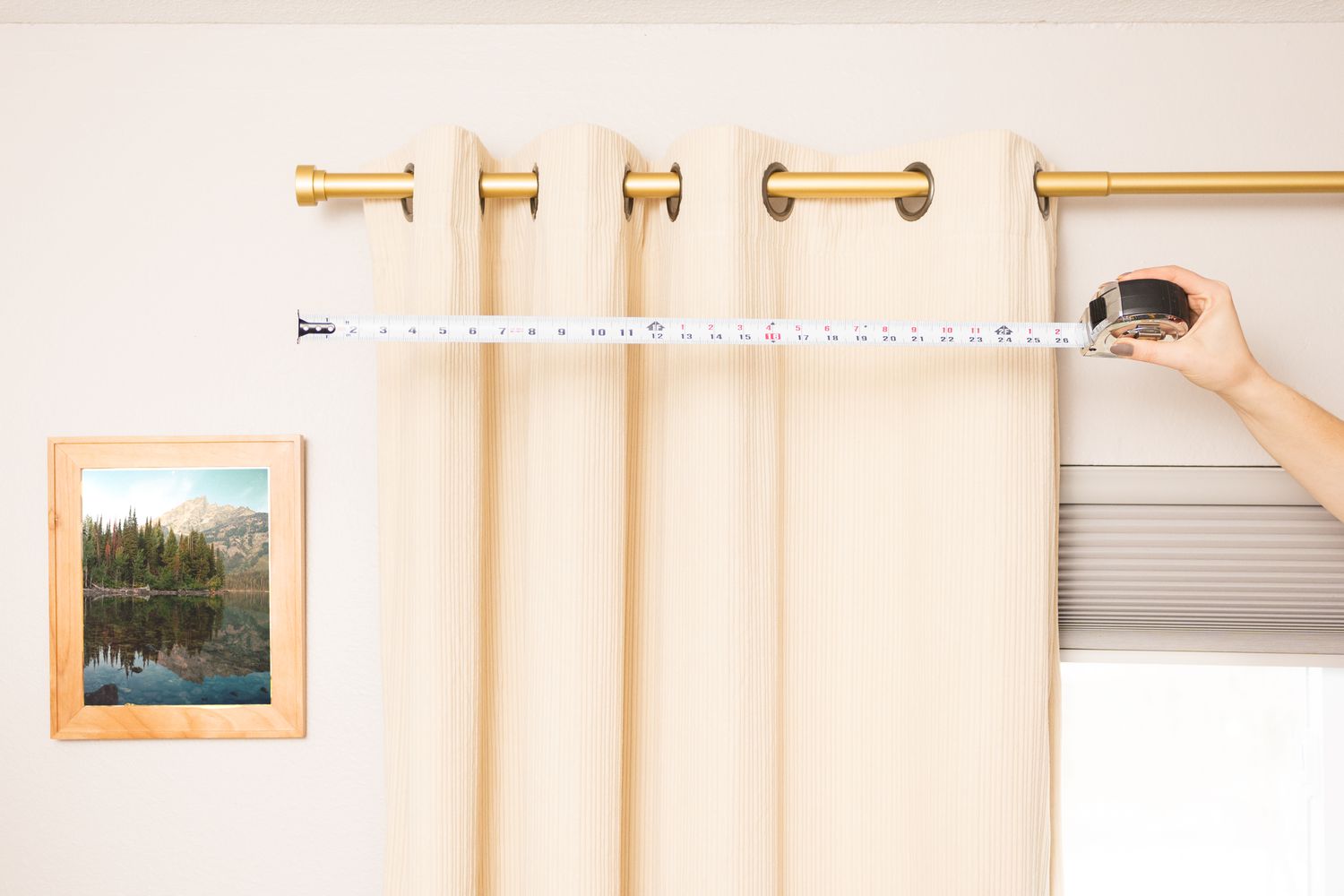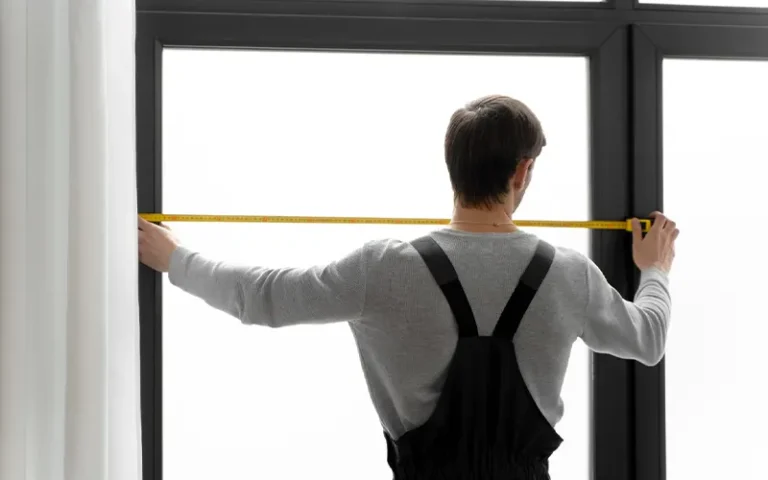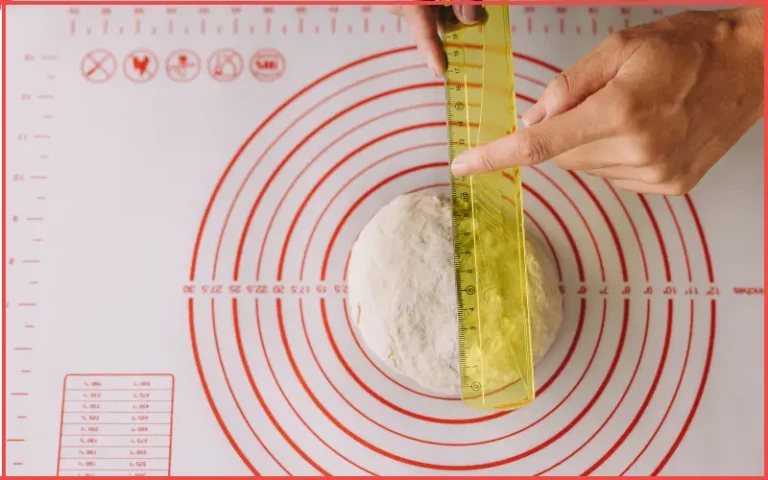How to Measure for Curtains?: Perfect Fit Guide
To measure for curtains, measure the width of the rod and add extra for fullness. Then measure the length needed.
Are you looking to elevate your home decor with new curtains but unsure how to measure for them accurately? Properly measuring for curtains is essential to ensure the perfect fit and aesthetic appeal in your space. By following a few simple steps, you can easily determine the right dimensions for your curtains.
In this guide, we will walk you through the process of measuring for curtains to help you achieve a stylish and well-fitted look in your home. Let’s dive in and learn how to measure for curtains like a pro!
Introduction To Curtain Measurements
Looking to measure for curtains? Follow these simple steps to ensure accurate measurements: 1. Measure the width of your window, including any trim or moulding. 2. Determine the desired length by measuring from the top of the curtain rod to where you want the curtains to end.
3. Consider adding extra length for a more elegant look. With these tips, you’ll be able to measure for curtains with ease.
Importance Of Accurate Measurements
Accurate curtain measurements are crucial for ensuring that your curtains fit your windows perfectly. A poorly measured curtain can lead to an ill-fitting and unattractive window treatment that fails to serve its purpose. It’s essential to measure your windows correctly to get the right size of curtains that will cover the window adequately, provide privacy, and block out unwanted light.
Basic Tools Needed
Before measuring for curtains, ensure you have the necessary tools such as a measuring tape, a pencil, and a notepad to record your measurements. A metal measuring tape is preferable as it’s more accurate than a cloth tape. A notepad comes in handy to jot down your measurements to avoid forgetting them later.
To measure your curtains, follow these simple steps:
- First, measure the width of your window frame from one edge to the other. Record this measurement.
- Next, measure the length of your window from the top to the bottom. Record this measurement.
- If you’re using a curtain rod, measure its length and add it to the window’s width measurement. This measurement will give you the total width of the curtains you need.
- When measuring the length of your curtains, decide how far above the window you want the rod to be. Measure from this point to the window sill or the floor, depending on your preference. Record this measurement.
- If you want floor-length curtains, add a few extra inches to your length measurement to account for the hem.
By following these basic steps, you can take accurate measurements for your curtains and ensure a perfect fit for your window treatment.
Determine Your Curtain Type
Differences Between Curtain Styles
When choosing curtains for your space, it’s crucial to understand the differences between various curtain styles. Different curtain types can dramatically impact the overall look and feel of a room. Here are some common curtain styles:
- Eyelet curtains
- Pleated curtains
- Tab top curtains
- Rod pocket curtains
Choosing The Right Curtain For Your Space
Choosing the right curtain for your space involves considering the style, function, and fabric of the curtains. For example, sheer curtains are perfect for adding a soft touch and allowing natural light to filter through, while blackout curtains are ideal for bedrooms to create a dark and peaceful environment. It’s important to consider the color, length, and fullness of the curtains to achieve the desired look and functionality.
Measuring Curtain Width
When it comes to measuring curtains, getting the width right is essential for achieving the perfect fit and drape. In this section, we will guide you through the process of measuring curtain width, including calculating the ideal width and providing tips for fullness and overlap.
Calculating Ideal Width
To calculate the ideal width for your curtains, follow these simple steps:
- Start by measuring the width of your curtain track or rod. Measure from end to end, excluding any finials.
- Add extra width for fullness and overlap. The amount of extra width you add will depend on the desired fullness ratio. A general rule of thumb is to multiply the track or rod width by 1.5 to 2 times for medium to fullness, or 2.5 to 3 times for extra fullness.
- Round the final measurement to the nearest whole number. This will be the ideal width for your curtains.
For example, if your curtain track measures 60 inches, and you want medium fullness, you would multiply 60 by 1.5, resulting in an ideal width of 90 inches.
Tips For Fullness And Overlap
When it comes to achieving the desired fullness and overlap for your curtains, here are some helpful tips:
- For a more luxurious and full look, opt for a higher fullness ratio.
- Consider the type of fabric you will be using. Heavier fabrics may require less fullness, while lighter fabrics may benefit from additional fullness.
- Take into account the amount of natural light you want to let in. If you prefer a room to be brighter, choose less fullness to allow more light through.
- Overlap your curtains slightly when closed to ensure privacy and to prevent any light from seeping through the gaps.
By following these tips and calculating the ideal width, you can ensure that your curtains not only fit perfectly but also enhance the overall aesthetic of your space.

Credit: www.vermontcountrystore.com
Measuring Curtain Length
When it comes to measuring curtains, getting the length right is essential for achieving the perfect look. Whether you prefer floor-length or sill-length curtains, it’s important to take accurate measurements to ensure a proper fit. In this guide, we will explore the two main options for curtain length and discuss the allowances for hanging above the window.
Floor-length Vs. Sill-length
Choosing between floor-length and sill-length curtains depends on your personal preference and the style you want to achieve. Floor-length curtains, as the name suggests, extend all the way to the floor, creating an elegant and dramatic look. On the other hand, sill-length curtains end at the windowsill, offering a more casual and relaxed appearance.
To measure for floor-length curtains, start by measuring from the top of the curtain rod or track down to the floor. Make sure to account for any desired pooling or clearance from the floor. For sill-length curtains, measure from the top of the rod or track to the desired point where you want the curtains to end, typically at the windowsill.
Allowances For Hanging Above The Window
In addition to choosing the desired curtain length, you may also want to consider the allowances for hanging the curtains above the window frame. This can help create the illusion of taller windows and add a touch of sophistication to your space.
To determine the allowance for hanging above the window, measure from the top of the window frame to the desired point where you want the curtains to begin. This can vary depending on your preference and the overall look you want to achieve. It’s recommended to add at least a few inches (typically 4-6 inches) to the window height to create a visually appealing effect.
By following these simple guidelines, you can ensure that your curtains are measured accurately and perfectly complement your space. Remember to double-check your measurements before making any purchases to avoid any potential issues. Whether you opt for floor-length or sill-length curtains, taking the time to measure properly will result in a polished and cohesive look for your windows.
Accounting For Curtain Rods
When it comes to measuring for curtains, accounting for curtain rods is a crucial aspect. Properly accounting for the curtain rod ensures that the curtains fit and hang correctly, enhancing the overall appearance of the room.
Placement Of Rods
Before measuring for curtains, it’s essential to determine the placement of the curtain rods. The height and width of the rod placement will impact how the curtains hang and the overall look of the window treatment. Ensure that the rods are installed at the desired height and extend beyond the window frame to allow the curtains to fully cover the window when open.
Impact On Curtain Dimensions
Accounting for the curtain rods significantly impacts the final dimensions of the curtains. The width of the curtain panels should be wide enough to cover the window when closed and to allow for a proper drape when open. Additionally, the length of the curtains should account for the distance from the rod to the floor to achieve the desired look and functionality.
Special Considerations
When measuring for curtains, there are some special considerations to keep in mind to ensure a perfect fit and a polished look in your space.
Dealing With Bay Windows
For bay windows, measure each section individually for accuracy. Add extra width to each curtain panel to allow for full coverage.
Adjustments For Radiators And Sills
When there are radiators or sills, ensure curtains hang above them. Measure from the top of the window to where you want the curtains to end.
Finalizing Your Measurements
When finalizing your measurements for curtains, it’s crucial to ensure accuracy. Double-checking figures and knowing when to seek professional help are key steps in this process.
Double-checking Figures
Measure twice, cut once to avoid errors. Recheck each measurement meticulously before proceeding.
When To Seek Professional Help
If uncertain, consult with a professional to guarantee precise measurements.

Credit: www.aprilnotes.com
After Measurement: Next Steps
Discover the next steps after measuring for curtains, ensuring a perfect fit for your windows. Follow these simple guidelines to measure accurately and achieve a seamless and stylish look for your home.
Choosing Fabrics And Patterns
Consider the room’s decor style when choosing fabrics and patterns. Opt for light fabrics in small rooms for a spacious feel.
Dark, heavy fabrics add warmth to large rooms. Patterns can enhance or detract from the overall design scheme.
Custom Vs. Off-the-shelf Curtains
Off-the-shelf curtains are more budget-friendly and readily available. Custom curtains offer a perfect fit and unique design.
Decide based on budget and design preferences.
Installation Tips
When it comes to installing curtains, Installation Tips are crucial for a perfect finish.
Hanging Curtains Properly
- Use a tape measure to determine the rod length needed.
- Position the rod brackets at least 4 inches above the window frame.
- Ensure the rod is level before securing it in place.
Ensuring They Look Great
- Opt for curtains that reach the floor for a polished look.
- Choose a fullness ratio of 1.5 to 3 times the rod width for a lush appearance.
- Steam or iron the curtains for a crisp and tidy appearance.
Maintenance And Care
When it comes to maintaining and caring for your curtains, following proper cleaning tips and understanding the longevity of your curtains is essential. By taking the right steps to care for your curtains, you can ensure they remain in top condition for years to come.
Cleaning Tips
Regular cleaning is key to prolonging the life of your curtains. Follow these simple cleaning tips to keep your curtains looking fresh and vibrant:
- Vacuum your curtains regularly to remove dust and dirt, especially in high-traffic areas.
- Spot clean any stains promptly using a mild detergent and a soft cloth.
- For machine-washable curtains, use a gentle cycle with cold water and a mild detergent.
- Hand-wash delicate curtains using cold water and a mild detergent, then air-dry to prevent damage.
- Consider professional dry cleaning for heavy or intricate curtains to maintain their quality.
Longevity Of Your Curtains
Understanding the factors that affect the longevity of your curtains can help you make informed decisions about their care and maintenance. Here are some key points to consider:
- Quality of Fabric: Choosing high-quality fabrics can significantly extend the lifespan of your curtains.
- Sun Exposure: Direct sunlight can cause fading and deterioration, so consider using UV-protective curtains in sunny areas.
- Proper Installation: Ensure your curtains are installed correctly to prevent unnecessary wear and tear.
- Regular Maintenance: Follow a consistent cleaning schedule to prevent buildup of dust and stains.
Frequently Asked Questions
How Do I Measure For Curtains?
Measure the width of the window and add 4-8 inches on each side for fullness. Measure the height from the rod to where you want the curtains to end.
What Is The Standard Length For Curtains?
Standard length for curtains is 84 inches, which is suitable for most windows. For taller windows, opt for 96 or 108 inches.
How Do I Choose The Right Curtain Size?
Choose a curtain size that is wider than the window and long enough to reach the floor. Consider the height of the ceiling and the amount of natural light.
What Is The Best Fabric For Curtains?
The best fabric for curtains depends on the desired look and function. Cotton and linen are great for a casual look, while silk and velvet add elegance.
Can I Wash My Curtains At Home?
Most curtains can be washed at home, but check the label for specific instructions. Use a gentle cycle and mild detergent, and hang to dry or tumble dry on low.
Conclusion
Measuring for curtains is a crucial step in achieving the perfect look for your windows. By following the precise guidelines and using the right tools, you can ensure a flawless fit. Remember to consider both the aesthetic and functional aspects to enhance your living space.
With accurate measurements, you can confidently select the ideal curtains for any room.







